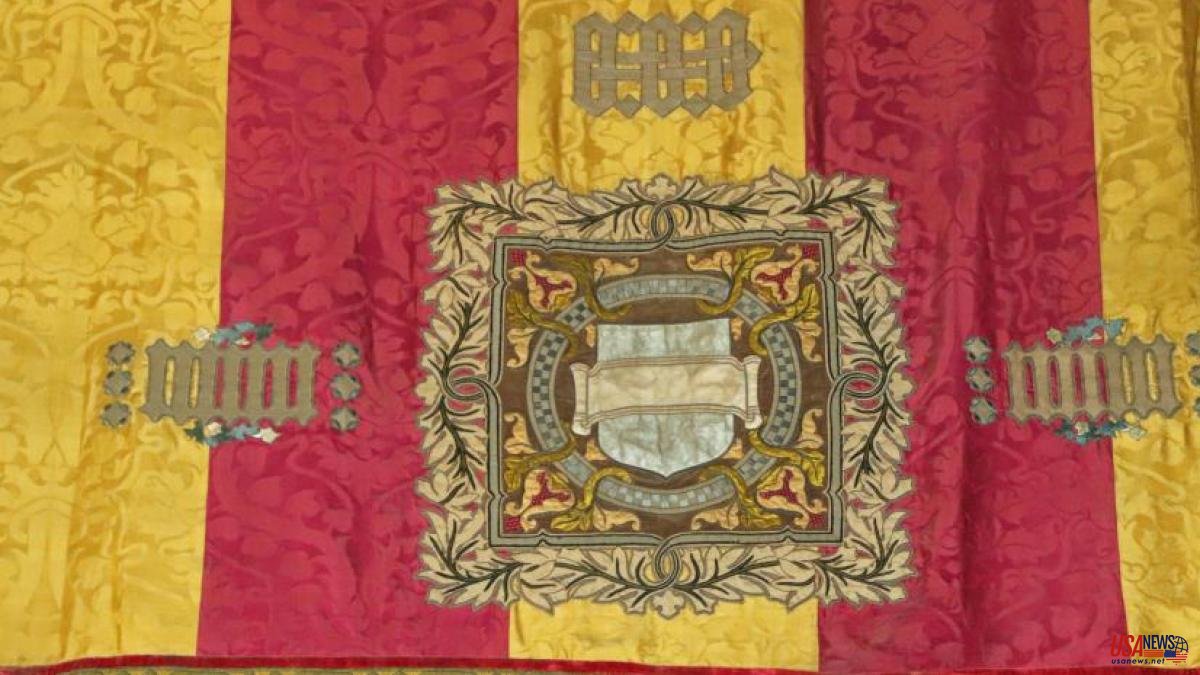One of the characteristics of the Saló de Cent in Barcelona City Hall are the 15 damasks that surround the walls of the historic Gothic room. Damask —domàs, in Catalan— is each one of the tapestries with the senyera in the background that form part of the redesign of the Saló de Cent directed at the beginning of the 20th century by Enric Monserdà. Seven of them refer to the political autonomy of Barcelona prior to 1714. The rest are dedicated to the municipalities added to the city between the end of the 19th century and the beginning of the 20th. But there is one who does not say anything, he is mute and no one knows for sure why.
The mysterious damask is just to the right once you enter the Saló de Cent. It has the same design and size as the rest but it doesn't say anything. Yes, there are what seem to be some Gothic letters following the pattern of the others. But no, they are not letters, they are just a simulation, a drawing that imitates them.
In theory, this damask would form part of the group dedicated to the added municipalities. Thus, one can find the domasos of Sant Andreu, Gràcia, Sant Gervasi, Les Corts, Sarrià, Sant Martí and a seventh that Horta and Sants curiously share. It is the only Damascus dedicated to two municipalities and not just one. Why was one of the tapestries destined for two municipalities when one could have been destined for Sants and the other for Horta? Had we done so, we would not be wondering why there is an apparently leftover apricot, the dumb one.
The answer is not clear. Some historians and former councilor Jordi Portabella believe that, apart from the fact that it could have been a simple computation error and that the silent damask was a simple resource to cover a gap, there is the possibility that it would have been reserved for Sant Adrià del Besòs . And it is that this city was really in a process of aggregation to Barcelona. In fact, it was approved in 1929, but it was never executed and in 1955 it was officially revoked.
The apricots from the Saló de Cent were removed during the Franco regime and were not restored until democracy. In 2004 they were removed for cleaning and were not placed again until four years later at the insistence of the municipal ERC group, then led by the aforementioned Portabella.













